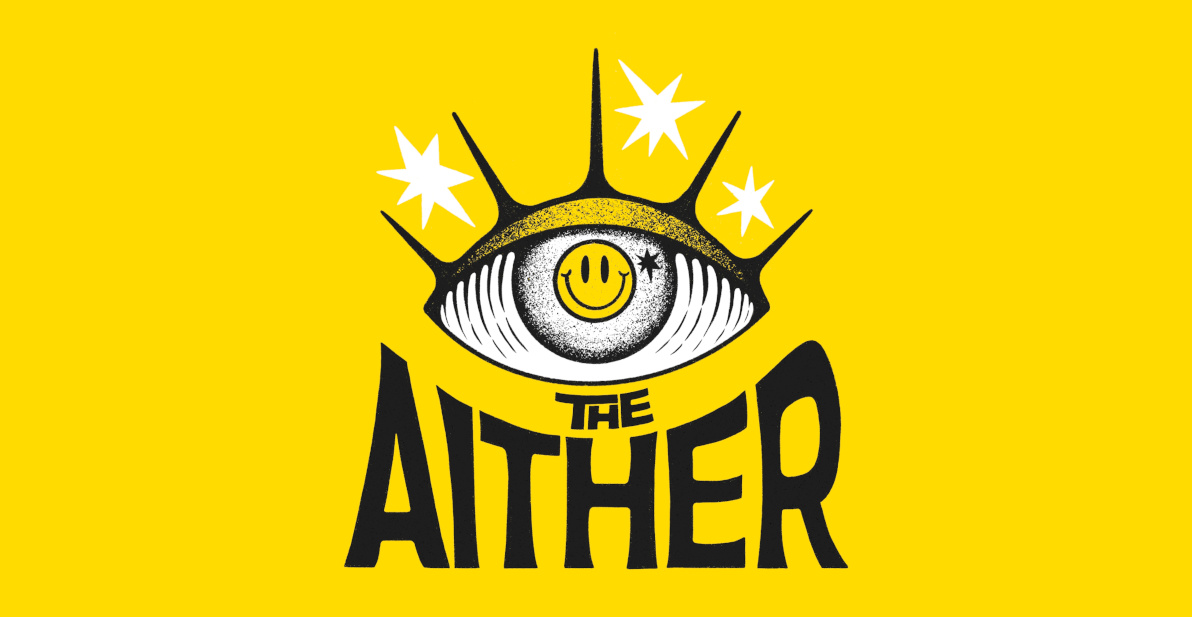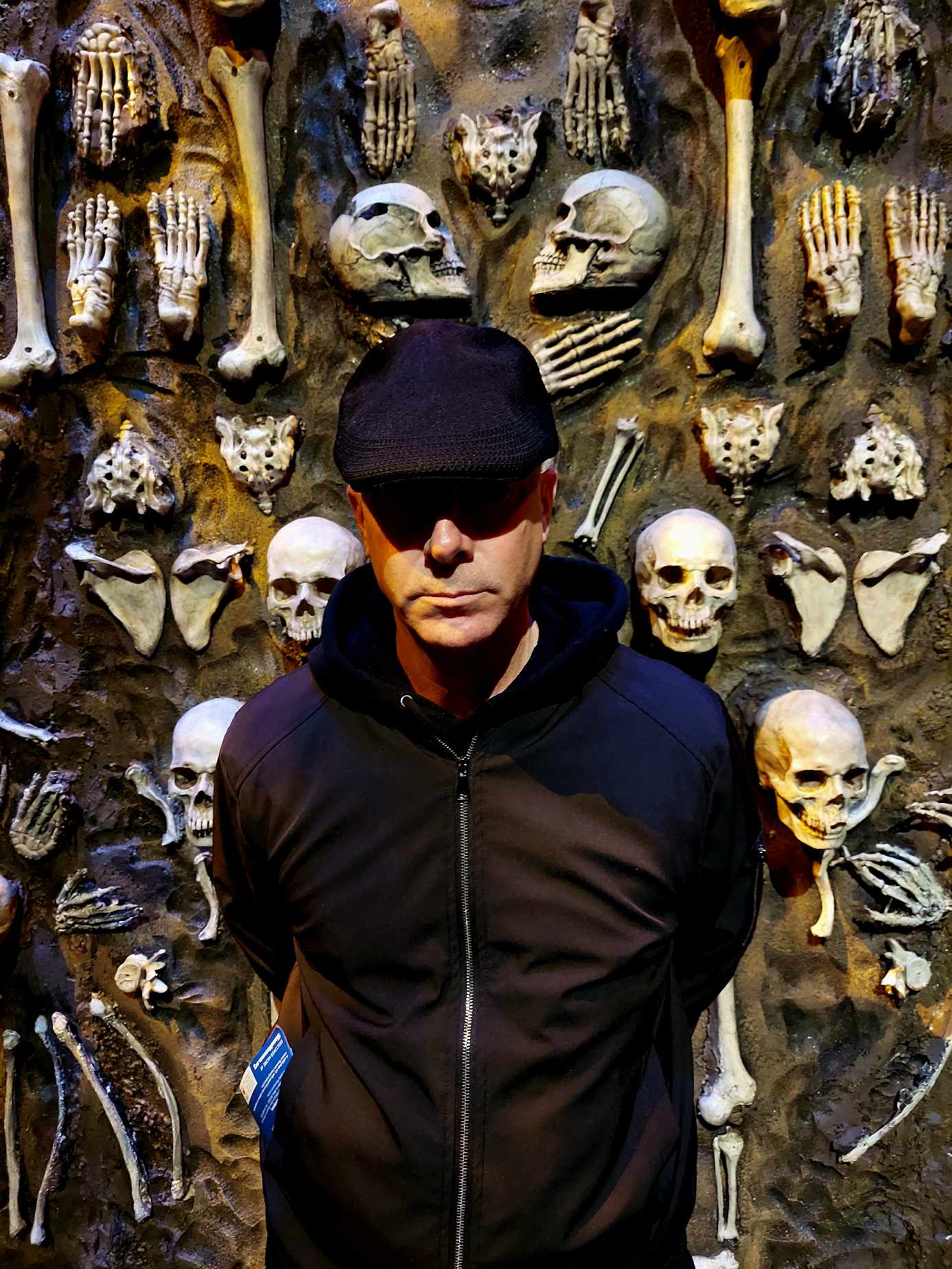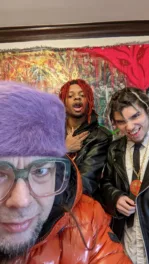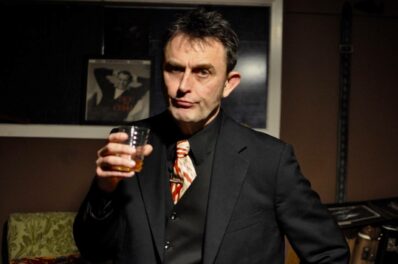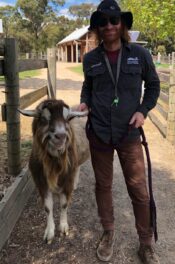Boots, fists, sweat, spit, and blood fly over a seething, tangled mass of lithe limbs destined for tomorrow’s bruises. Flashes of shaven heads and torn shirts, pummelled by amplified noise and vitriolic vocals. Danger, excitement, and manic energy; the lust of youth in bloom under the threat of mushroom clouds in sunny Florida, the land of fantasy vacations, émigrés, drugs, and decrepit retirees.
Grainy black-and-white ‘zines’ produced cheaply by necessity in a subterranean world no one else would give voice to. Photographs exhibited in urbane museums and collected in volumes of glossy books depicting desolate urban landscapes, defaced subway advertisements, abandoned chained up bicycle remnants – single wheels and bare frames waiting for owners who will never return, ‘Battle Vests’ – the personalized raiments of underground music enthusiasts patchworked with band logos, and more.
These are some of the scenes from the life and work of iconoclastic artist Adel Souto; equal parts writer, musician, photographer and filmmaker. Born in Havana, Cuba in 1969 his parents took him to live in Spain until Francisco Franco left power in 1975, at which time the family moved to Miami, Florida.
Adel attended high school in Miami and took a few courses in college, but dropped out. Like many of the most interesting figures in literature and the arts, he’s largely an autodidact.

A spirit of irreverence and grit runs throughout his work in different mediums.
What does he offer? A fist to the face of convention.
Adel agreed to this interview via email, and I trust you shall find him as interesting as I do!
The written word, sound, and image are all equally represented in your creative output. I find that fascinating as most artists are compelled to work within only one of those fields, and often they do not produce as much within that single discipline as you have done collectively within your many chosen fields.
When you first felt the urge to create as a young artist where you drawn to one before any others?
Does inspiration come about differently for you in each endeavour, or is it a similar process overall?
A: Yeah, I was artistically gifted at a young age, so I’m not sure what urged me on at that time. Back then, I was told by a number of instructors that I would probably excel in some form of drawing or painting. However, I was also discouraged from making it a career, as it was a popular belief that most artists died broke.
When I attempted to go to art school, I was pushed to aim for work in commercial art. Because of that, I became disillusioned, left it behind and sort of drifted aimlessly in the art world. Having no formal training beyond my teenage years, I just picked up whatever I fancied at the time: a paintbrush, a synthesizer, a camera. In those years, I guess the urge to create during that time stemmed from a need to express myself, as well as to connect with other like-minded artists.
Inspiration is definitely a different process for each endeavour. There are times I want to speak to the world, and show them what I’ve seen, or how I see it. Other times, I’m just trying to create something for myself, and don’t even show the finished pieces to anyone outside a close circle of friends.
There are even works where I’m just trying to express my sense of humour, grief, or cynical outlook – such as my Discarded Religion (Found) series, where I repurpose abandoned religious items, or my Discipline series where I created sex toys using only items primitive people would use.

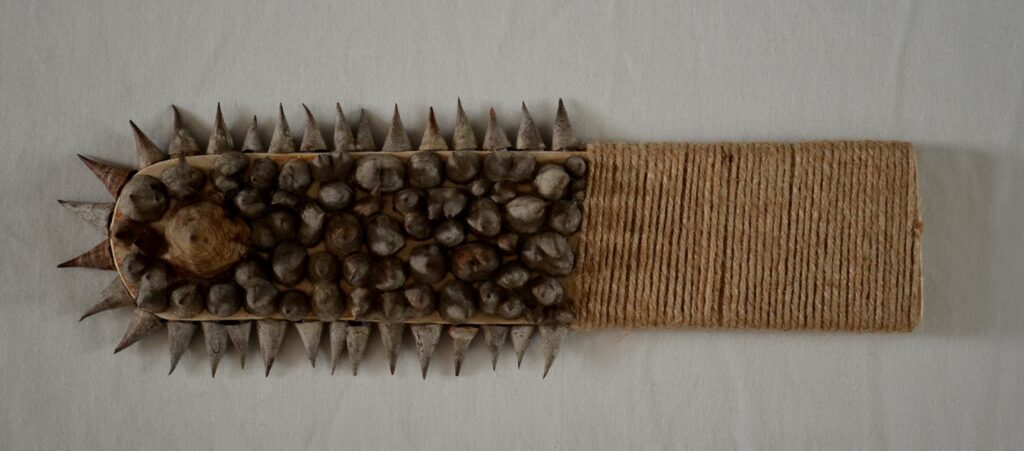
For those of us initiated into the underground art scenes in the pre-Internet age, it was often the case that one had to have guides who would introduce certain albums, books, magazines, and artists to the neophyte.
How did you come to discover the underground, and at what age were you when you got hooked into wanting to become involved in it to some degree?
A: Honestly, early MTV had a hand in it, as well as Dr. Demento.
In 1979, when I was nine in Miami, I used to listen to a highly-edited hour-long syndication of The Dr. Demento Radio Show, which introduced me to a slew of oddballs from The Shaggs and Frank Zappa, to Screamin’ Jay Hawkins and Kim Fowley. Later, when I was eleven, cable came to my neighbourhood, and seeing MTV had few music videos to play at that time, there was a huge rotation of new wave acts aired.
By my early teens, and I got into punk at 14, I discovered the local record stores, especially their fanzine section, which opened up a world I thought only existed in movies.
It took me until I was 16 to actually want to be a part of the underground scene. I used to play the bass guitar, and my friend Ray brought up the idea to start a band.
We formed a terrible band, with the terrible name of Gang Bang, that never left the garage, but it germinated the seed that expanded into the insanity I currently find myself in.

Who are some of your inspirations in music, writing, and the visual arts?
Have you had a chance to meet or work with any of them? If so, was it always a positive experience?
A: I have so many influences, as well as inspirations – some of which are miniscule, while others have actually helped to shape my artistic blossoming, some are momentary, while others stay for a lifetime.
Musically, this could include Jello Biafra, D. Boon, Mark Mothersbaugh, Michael Gira, Genesis P-Orridge, and Boyd Rice.
When it comes to writing, there’s William S. Burroughs, Robert Anton Wilson, Michel Foucault, and Adam Parfrey.
Kenneth Anger and Stan Brakhage have inspired my love of experimental film, plus Rumi and e e cummings both had a hand in shaping my poetry.
The only field I don’t have outside inspiration would be my photography, as I just try to capture what I see as beautiful in its own way.
While I have met a few of the previously mentioned, I haven’t worked with any of them. Still, I’ll be bold enough to say I don’t want to, as I prefer to keep them as the influences they are, and sometimes working with someone could really sour you to them or vice versa, and I’d hate for that to happen.
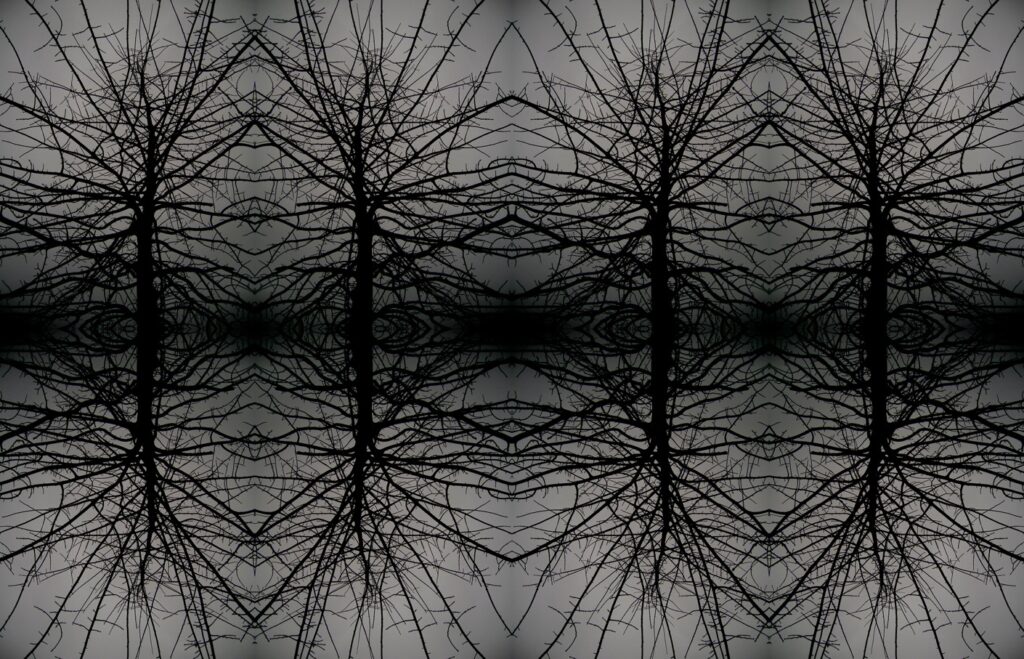
The DIY ‘zine’ culture of the ‘80s into the early 2000s was a rich and varied thing, with tribes of enthusiastic individuals all contributing their works in any number of specific obsessive fields from sub-genres of underground music to poetry, bizarre art, and even political tracts.
Record stores, underground book stores, and coffee houses in major cities were great resources for the avid ‘zine collector.
I understand you were an active participant in that world at its zenith. Many consider it an antecedent of ‘blogger’ culture, but in my opinion something is lost when you do not have the tactile pages and cannot physically experience the printed – often manually xeroxed – collages that made up the content of many of those little stapled paper pamphlets.
The soul of the obsessive individual was present there, and in your hands from theirs. Do you agree?
What are your thoughts on the differences between ‘zine’ culture and online blogs?
When, how, and why did you start producing your own ‘zines?
A: I completely agree. There’s so much more you’re able to express in a zine than online. While both can have writing and art, a zine will let you know so much more through its choice of paper, the size it’s produced in, even the way it’s put together.
Just the fact that it might be slick like a magazine, or a cut-n-paste photocopied throwaway says way more than a website ever could.
This is quite a path that has ebbed and flowed for me. My first zine, Evolution, was started in 1987, and it was a simple collection of band interviews, as well as music and zine reviews. After that was my most popular, Feast of Hate and Fear, which ran from 1992 to 1997. Though it contained much of the same as Evolution, I began to write articles of things I felt the need to express, whether philosophically or politically, as well as topics I was really interested in and wanted to find an audience that would as well.
Just after the release of FoHaF’s Issue 8, I lost my drive to produce printed work.
I only got onto the internet in the summer of 2000. I created the Feast of… website in 2001, but didn’t think of writing new pieces until probably 2005, even though I started doing music reviews there in 2002. So you could say that my actual online blogging began around then.


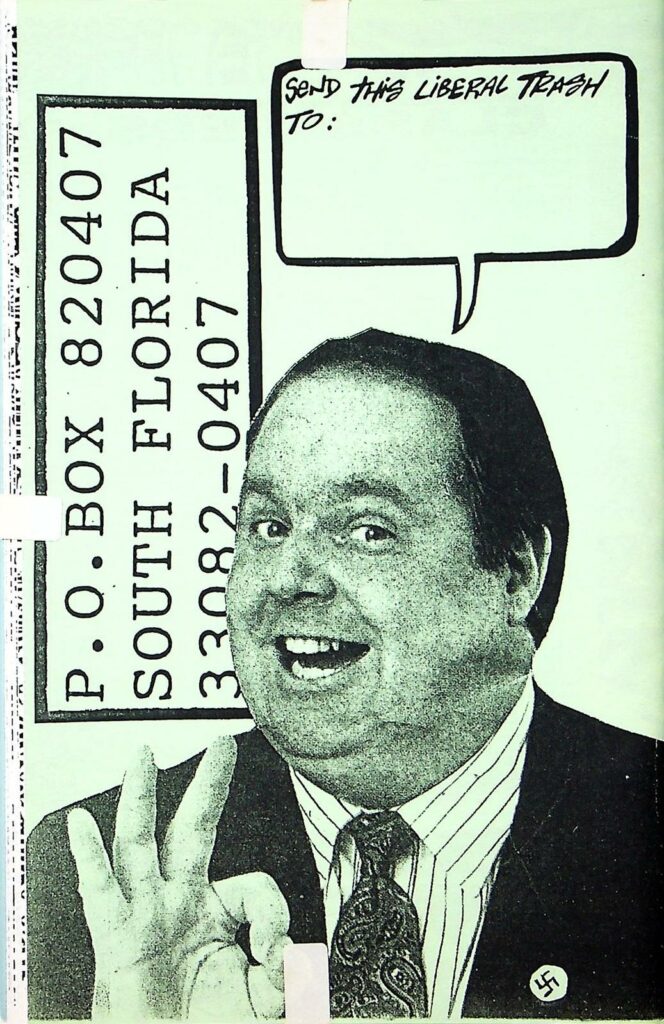
It wasn’t until 2015 that I asked myself, “Why aren’t you doing zines anymore?” That year I put out two, Auspex, a newsprint fold-out that was a collection of writing and art, and Exscind, which was similar, but a standard half-page fanzine. This really opened me back up into the world of zines, and zine-making.
I started to attend fanzine festivals in New York City and Philadelphia, making new connections within that world, which inspired me to keep going. Since then, I have published over 15 zines, covering my writing as well as my photography. I even began a series of ten art zines, each issue showcasing one friend’s artistic output.
While some of the work that went into fanzines has switched over to producing books, I’m certain I’ll still release new zines every now and again, as I’m currently thinking of putting out a zine of photographic close-ups of minerals, fossils and gems I’ve collected, as well as another with the pictures I’ve taken of all the truck stop churches across in my travels.
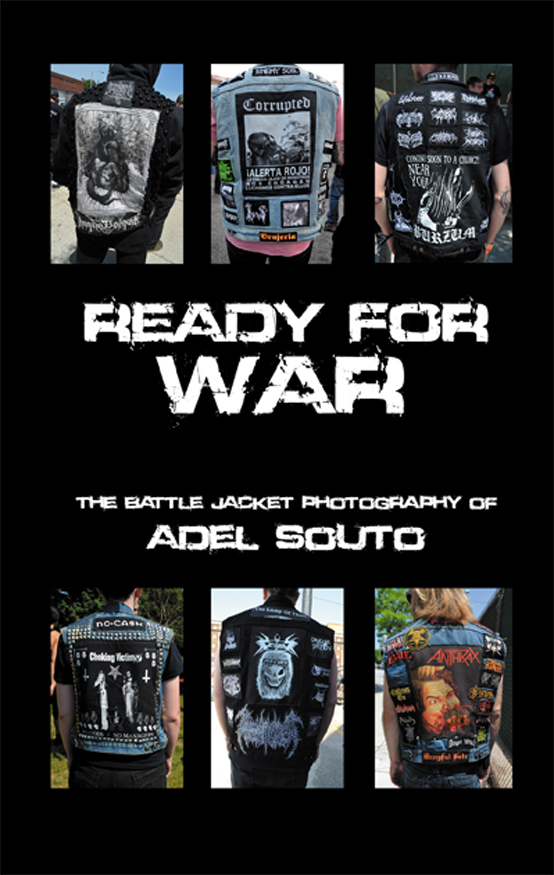

You were involved in the Punk, Hardcore, and Metal scenes at a time before those genres became arguably rather gentrified, homogenized, and ultimately more commercial.
Was this happening primarily in Florida?
Do you have any particularly savoury or unsavoury stories from those days?
How do you feel now about those genres, especially in comparison to when you were involved?
A: I look back at my involvement in those scenes rather favourably, even though some of the bands came to an end somewhat negatively. I was in about four bands that never stepped out of the practice space, and one that didn’t do more than record a demo and play live twice. Yet, I was also in two for several years, both of which helped shape the south Florida hardcore scene: Miami’s first straight edge band, Violent Deed, and one of the area’s earliest metalcore acts, Timescape Zero.
While I’m somewhat proud of those accomplishments, the scene I was involved in then was extremely violent, and Timescape Zero especially had a hand in that. Another member and I were both homeless during the writing of our early material, so my lyrical output was about my life at the time – street gang affiliations, drug use, and other scumfuckery.
I’m kind of embarrassed about a bit of it, but also understand it as a product of its time.
I still love punk, hardcore and metal. Though I’m not actively involved in those scenes anymore, I still listen to a lot of it – old and new. I have a lifelong admiration of early punk, hardcore, and metal, but even dig many of the newer forms of these genres. From artcore, and neo-crust, to blackgaze and avantguard doom.
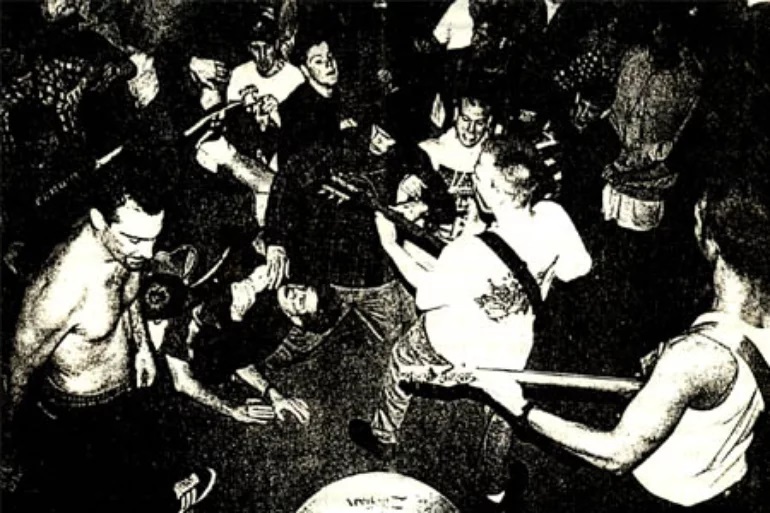

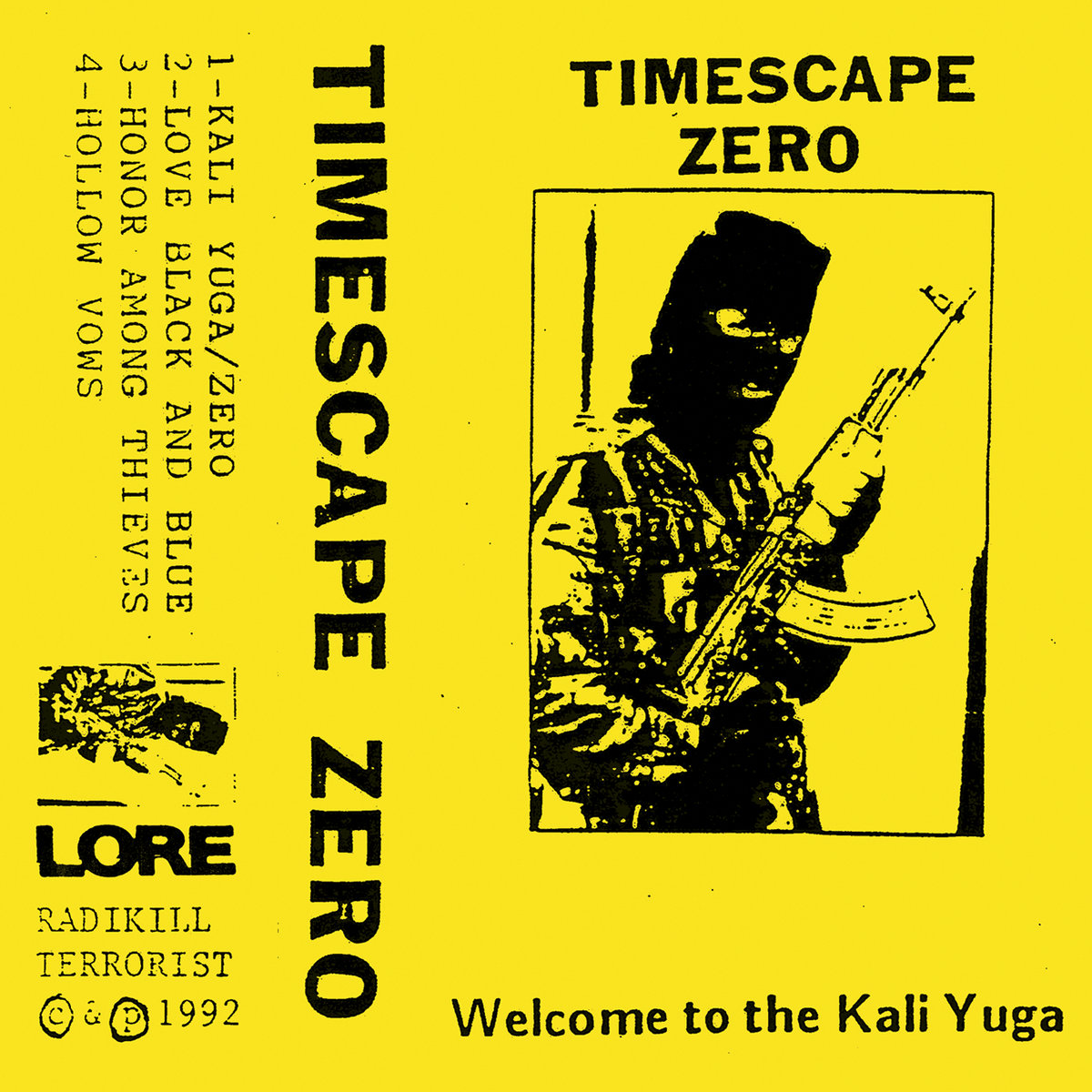
One of the albums you recorded, which I love, is the 156 album Memento Mori. All tracks on the record were played using only human bones, and the record was also designed to be played at 45 rpm to listen to the tracks as originally recorded, and 33 rpm to listen to them on rainy days (Thunderdrone versions).
Originally released as a limited edition 10” record, you’ve recently reissued it as a CD.
Can you share where the ‘instruments’ on the album came from?
Are you a fan of Ritual and Death Industrial music per se?
A: The idea behind 156 began just before moving to New York City, and fully started soon after moving to Brooklyn. Accomplices and I would gather in fields, subway tunnels or abandoned buildings, and after I would pattern out a backbeat, we’d jam.
After some years living there, and a few releases, I helped manage the Infernum studio with tattoo artist Liorcifer. Working in the dark style of art he’s known for, a few folk would offer him gifts of human remains.
One day, while working at my desk, I was playing with a human femur, and wondered if I could incorporate it into my music. After a few days, I realized the tattoo studio had enough there to facilitate a group of musicians using only human bones.
For some time, I travelled from the studio in Manhattan to Brooklyn with a backpack full of skulls, femurs, mandibles, and vertebrae. Within a year, I was tired of worrying about the consequences of a stop-and-frisk, so I began to hunt down my own. Since then, I have collected three femurs, a number of skulls and skull caps, a dozen ribs, some scapula, humerus, radius, ulna and more.
While I have yet to, I always think of planning a live set with some of them, but so many factors keep me from trying it out in public – like confiscation, theft, or who knows what.
Yes, I am a fan of death industrial, and especially ritual industrial. As a member of T.O.P.Y., I got involved in mail correspondences and having penpals in the late 80s, and, though already a fan of early Coil and Current 93, was introduced to material by The Grey Wolves, Total, and Brighter Death Now. These turned me on to more the more ritualized aspects of industrial like Metgumbnerbone, and Zero Kama, which both influenced my Memento Mori works.
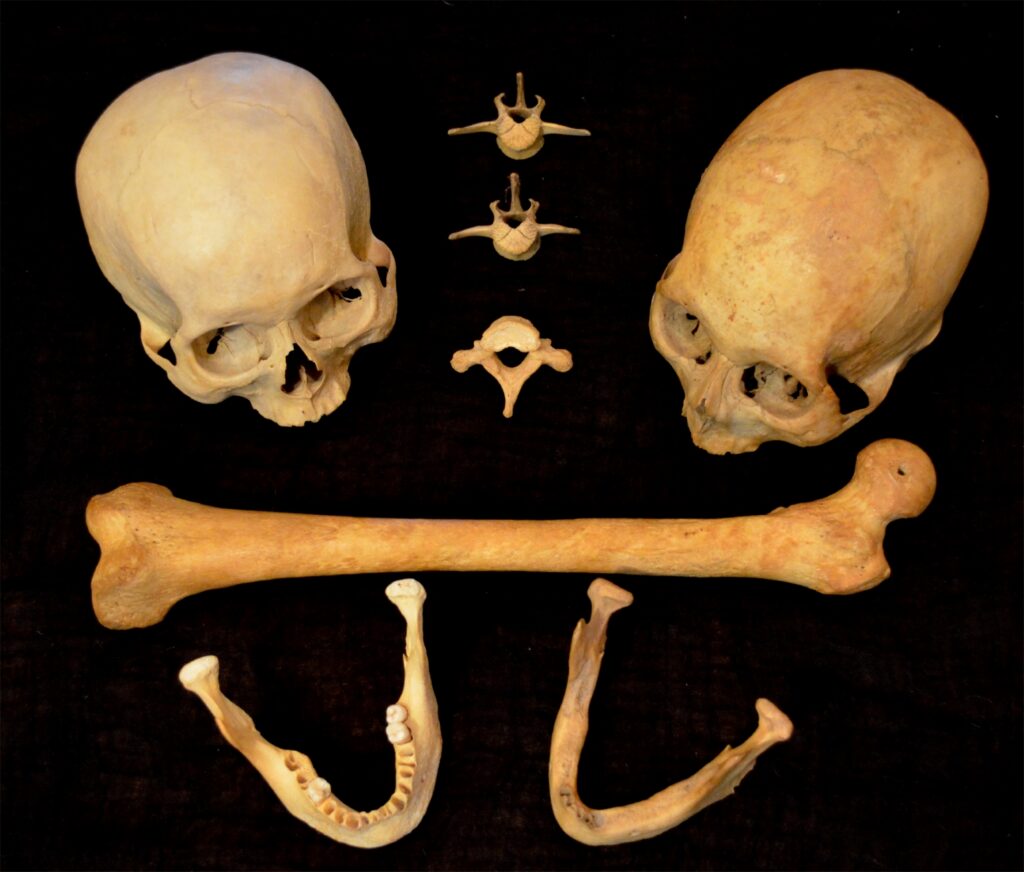
You’ve started a blog and an Instagram account as Know-It-All A-Hole Jerk, wherein you present a miscellany of interesting, bizarre, and curious bits of trivia from around the world. You’ve also compiled some of these bizarre factoids into a book, titled Encyclopedia Obscurum.
As someone who grew up loving Ripley’s Believe It Or Not!, especially the show with Jack Palance, I am enthusiastic about this project. There’s something of the Victorian about the idea, too.
When you mailed me a copy of the book, my wife saw the cover and said, ‘Is this written about YOU??’. Ha! Thanks, dear.
I’m curious about your process for collating these bits of miscellaneous information.
Have you been collecting some of them for years, having come across them researching other things or during random Internet surfing sessions?
A: Ha! If you’re a fan of the old Ripley’s Believe It Or Not!, the book may not have been written about you, but it certainly is for you. But, yeah, I love that stuff, and I’m sure shows like it, and even In Search of… or That’s Incredible, are what inspired my interest in the bizarre to begin with.
I actually started an early form of the blog way back in 2006, when I began a page on the Feast of Hate and Fear website, I titled The Wild World of Weird. A lot of the old zine was articles on topics of strangeness, and after moving it onto the web, decided to dedicate a page specifically to odd tidbits throughout history.
Once I began my personal website in 2011, I wanted something that would bring people back every now and again. I started the blog the following year, but it wasn’t until 2013 that I gave it the name Know-It-All Asshole Jerk, after a line from Judd Nelson’s character in The Breakfast Club. I realized that while a few dropped by to see my artwork, the blog was the most visited page on my site, and bought the “know-it-all” domain name, linking it directly to that page.
Two years ago, I had a list of so many stories that wouldn’t make the length of one of my usual entries, that I decided to start the Instagram account. Knowing they have a number of rules concerning the use of words, I opted for the shorter, and cleaner, Know-It-All A-Hole Jerk. Around the same time, I realized I had enough articles to compile an entire book, and decided to quit the blog, and focus on publishing the book, as well as sticking to the much shorter posts on Instagram.
Anyhow, the stories I collect in the book, and on social media, stem from heavy reading in those fields, both online and from books. Anytime I say, “Wow! That’s really interesting,” I feel the need to share it with others.
The world is full of wonders, and I enjoy helping others discover that.
I have an interest in weird art, strange music, odd history, offbeat literature, publicity stunts and hoaxes, peculiar people, crazy cults, and little-known science facts. If these projects facilitate discussions and connections with like-minded individuals it’s definitely been worth the time I’ve put into all of them.
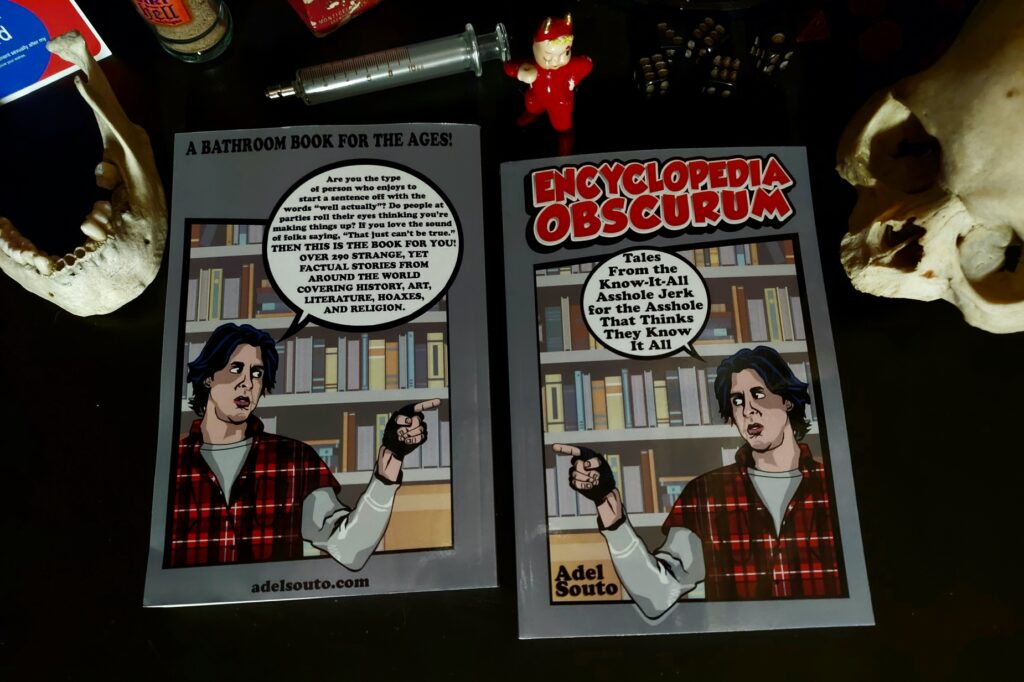
What are you working on currently?
Do you have any future projects planned which you might discuss?
A: I always have a slew of ideas brewing, but the projects I’m currently working on are my third and fourth photography art books. Not sure which order they will be released in, but one is Doorway Galleries, a collection of New York City doors that have been defaced by the thousands of wheatpasters, sticker freaks, promo whores and taggers that troll the darkened city streets.
The other is the full volume of Ready For War, a compilation of all my photos of battle jackets from concerts and music festivals. A few years ago, I released a small book of the same title, gathering my favourite 100, but this new one will have over 500 photographs.
I’m also working on a fanzine collecting all my writing on my mystical experiences, such as those that happened during an intense five-year ritual living the life of an ascetic.
Of course, I’m still working on new 156 material, as well as going back to a few of my art projects, like the previously mentioned Discipline series, and my A Joyous Swastika paintings, which are a continuing attempt to help cleanse the public conscious of the current negative connotations behind the ancient symbol.
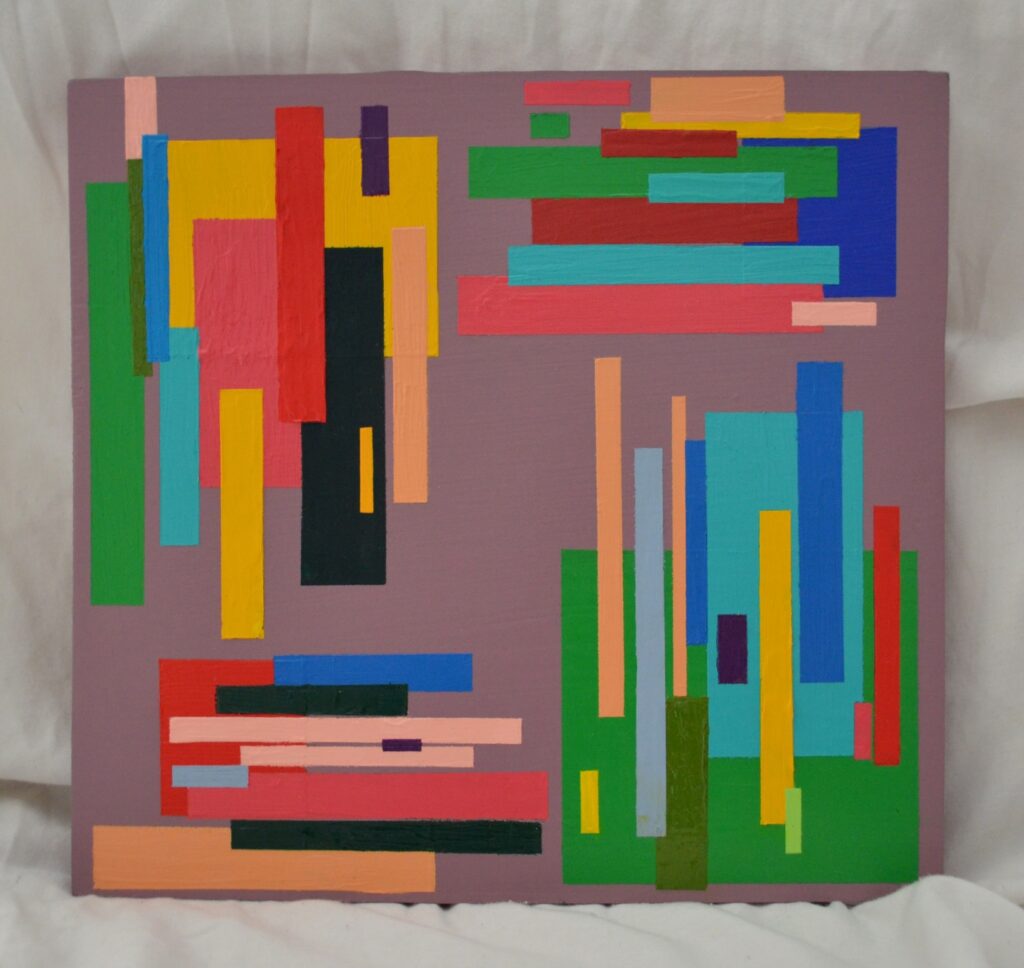
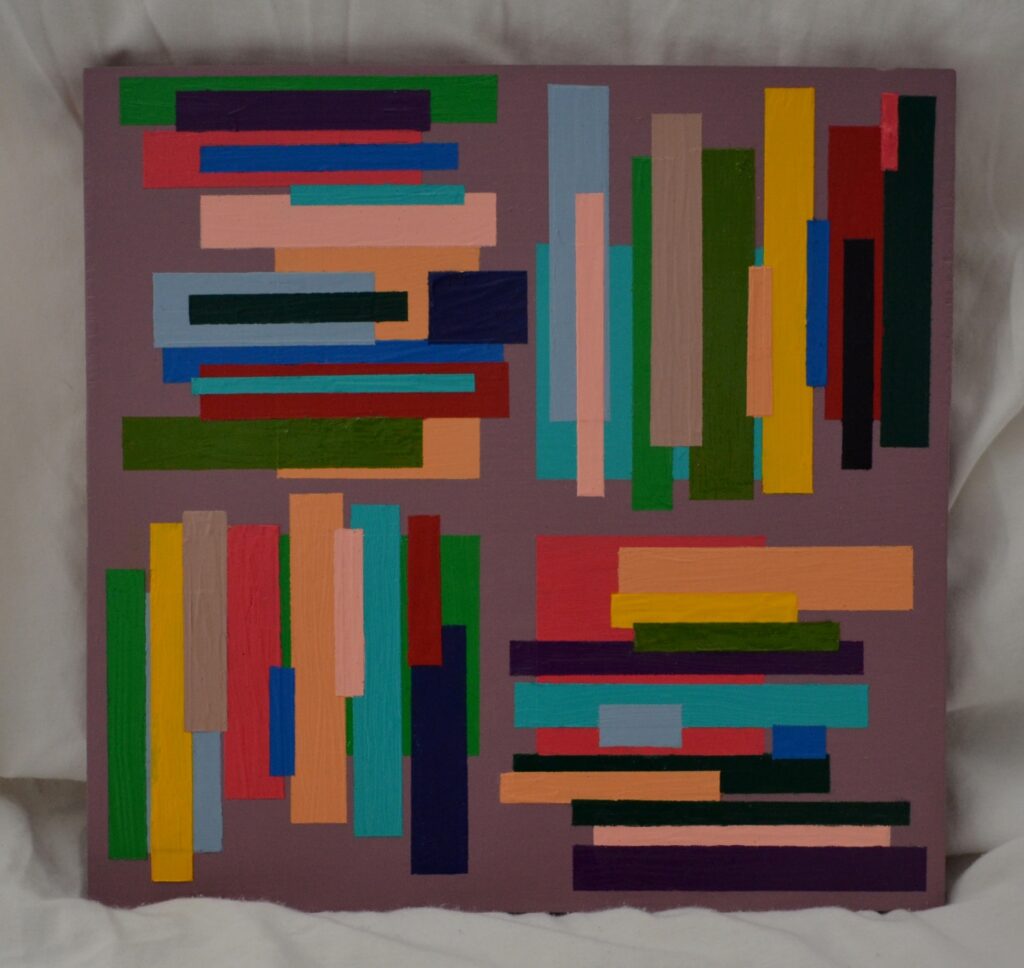
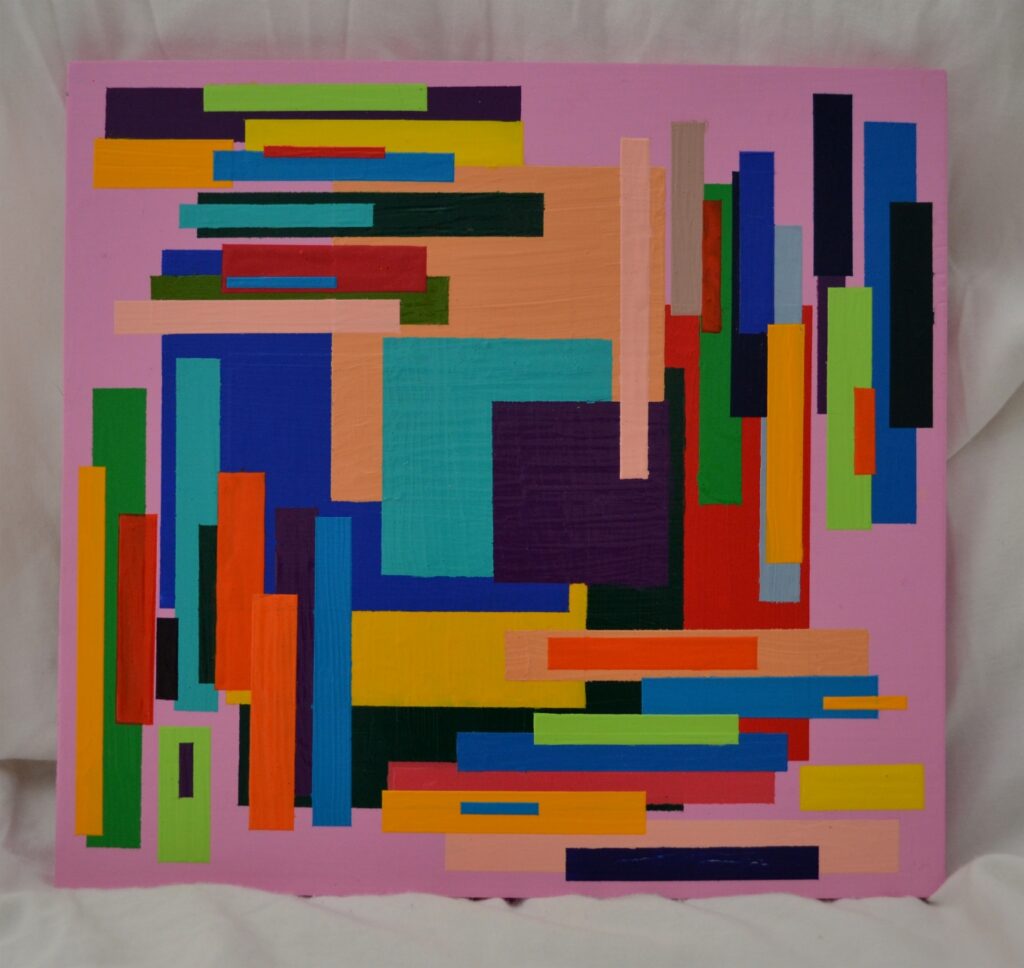

Links
- Adel Souto – Website
- Adel Souto – Online Store (via Etsy)
- Adel Souto – Soundcloud
- Adel Souto – Instagram
- Adel Souto – Facebook
- Adel Souto – twitter
- Adel Souto – YouTube
- Adel Souto – Wiki Page
- Adel Souto – Discogs Entry
- Adel Souto – Goodreads Entry
- Know It All A Hole Jerk (by Adel Souto) – Instagram
- OneFiveSix /156 – Bandcamp
- Feast of Hate and Fear – Wiki Page
- Feast of Hate and Fear – ZineWiki Entry
- Timescape Zero – Bandcamp
- Timescape Zero – Wiki Entry
- Timescape Zero – Discogs Entry
- Shroud (An improvisational jazz-doom-punk outfit Adel was in, circa 1992) – Bandcamp
- Martini Kulture (Adel’s experimental tape collage project, circa 2002) – Bandcamp
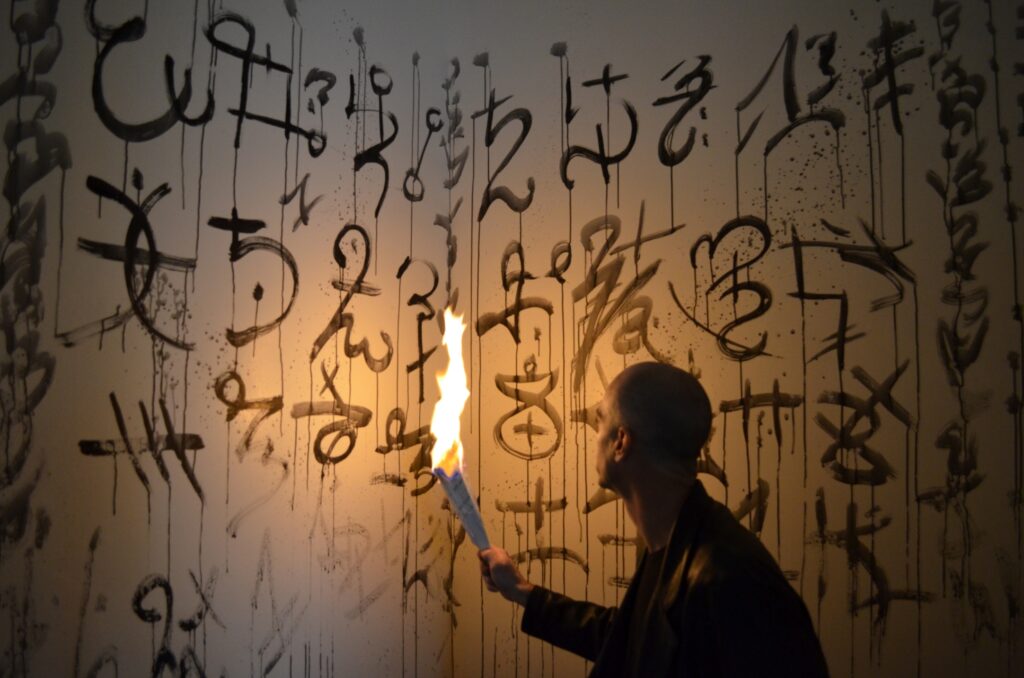
All images supplied by Adel or sourced online.
